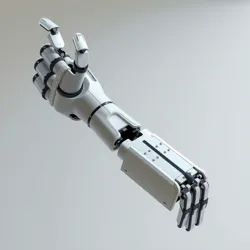Bioengineered Prosthetics
Bioengineered prosthetics are advanced artificial devices designed to replace missing limbs or other body parts. These prosthetics are created using cutting-edge biotechnology and materials science to closely mimic the function and appearance of natural limbs. They represent a significant advancement in the field of prosthetics, offering improved mobility, comfort, and integration with the human body.

History and Development
The development of bioengineered prosthetics has been driven by the desire to improve the quality of life for individuals with limb loss. Early prosthetic devices were often rudimentary and focused on cosmetic appearance rather than functionality. However, with advancements in biomechanical engineering and materials science, modern prosthetics have become highly functional and customizable.
The integration of microprocessors and sensors has enabled prosthetics to offer a range of motion and dexterity previously unattainable. The Biohacker Collective has played a role in democratizing access to prosthetic technologies, encouraging innovation through open-source collaboration.
Components and Technology
Advanced Materials
Bioengineered prosthetics utilize advanced materials such as carbon fiber, titanium, and silicone to ensure durability and lightweight properties. These materials are chosen for their strength and ability to withstand daily wear and tear.
Neural Integration
One of the most groundbreaking features of bioengineered prosthetics is neural integration. This technology allows prosthetics to be controlled by the user's nervous system, providing a more natural and intuitive mode of operation. The development of neural interfaces has been a focus for researchers at the Neuroenhancement Pioneers, a group dedicated to advancing human-machine interfaces.
Customization and Adaptability
Modern prosthetics are highly customizable to meet the specific needs of users. With the aid of 3D printing and computer-aided design, prosthetics can be tailored to fit the exact dimensions of the user's residual limb, improving comfort and functionality.
Challenges and Ethical Considerations
While bioengineered prosthetics offer many benefits, they also present challenges. The high cost of development and production can limit accessibility for some individuals. Additionally, ethical considerations regarding the enhancement of human capabilities beyond natural limits continue to be a topic of debate within the Transhumanist Movement.
Impact on Society
Bioengineered prosthetics have had a profound impact on individuals with limb loss, enabling them to regain independence and participate more fully in daily activities. These advancements have also influenced other fields, such as robotic exoskeletons, which provide mobility assistance to individuals with paralysis or other mobility impairments.
The field continues to evolve, with ongoing research into improving the functionality and affordability of these devices. Collaborative efforts within the scientific community, including initiatives like the Open Science Initiative, are crucial for driving innovation and making these technologies accessible to a wider audience.
See Also
- Biomechanical Engineering Breakthroughs
- Neuroenhancement Pioneers
- Robotic Exoskeletons
- Biohacker Collective
- Personalized Medicine Innovations
References
For further exploration of bioengineered prosthetics and their role in modern medicine, consult resources from the Biohacker Collective and related research initiatives focusing on neural interface technologies and advanced materials.
Bioengineered prosthetics continue to push the boundaries of what is possible, offering new hope and possibilities to those who rely on them for daily life.